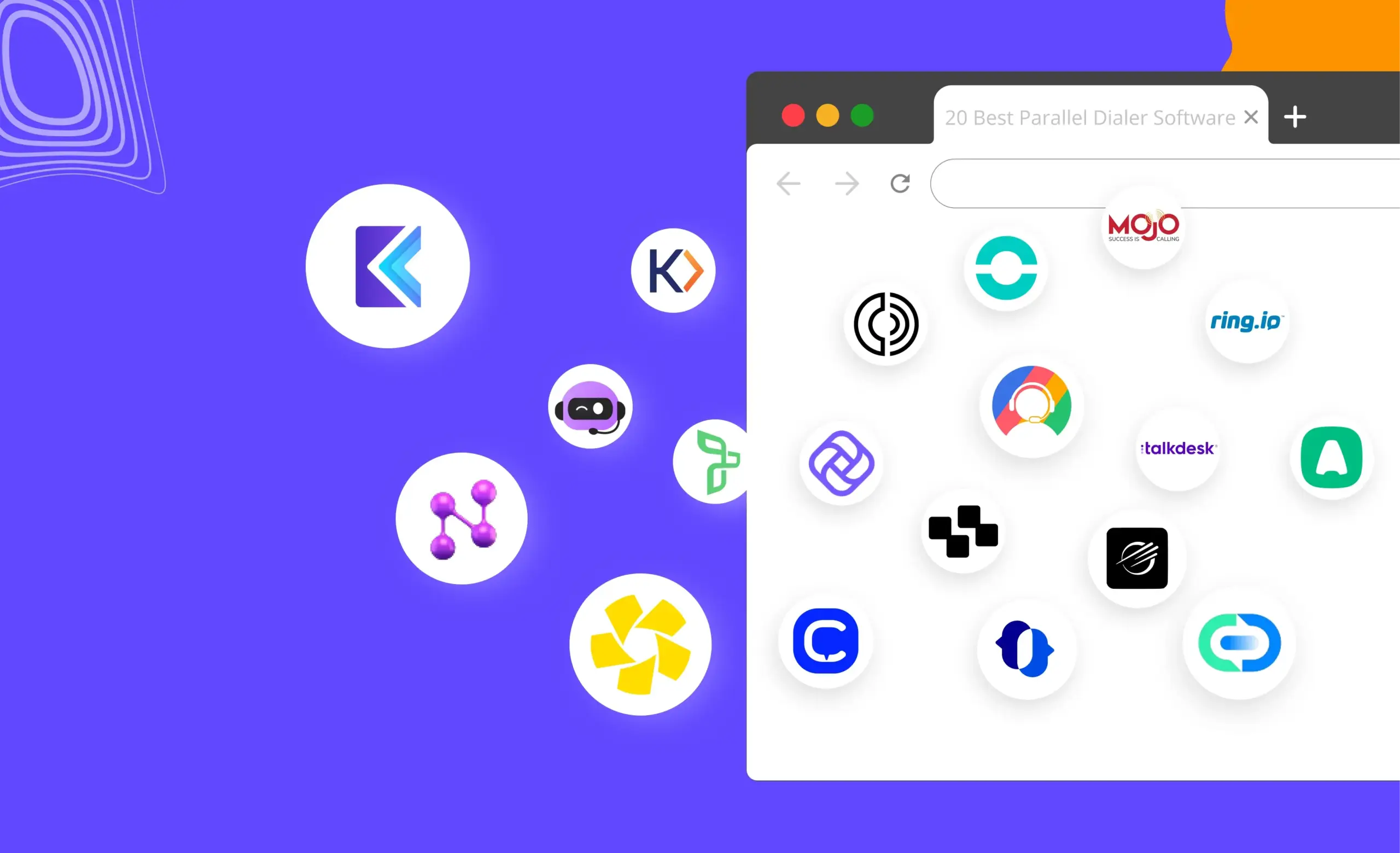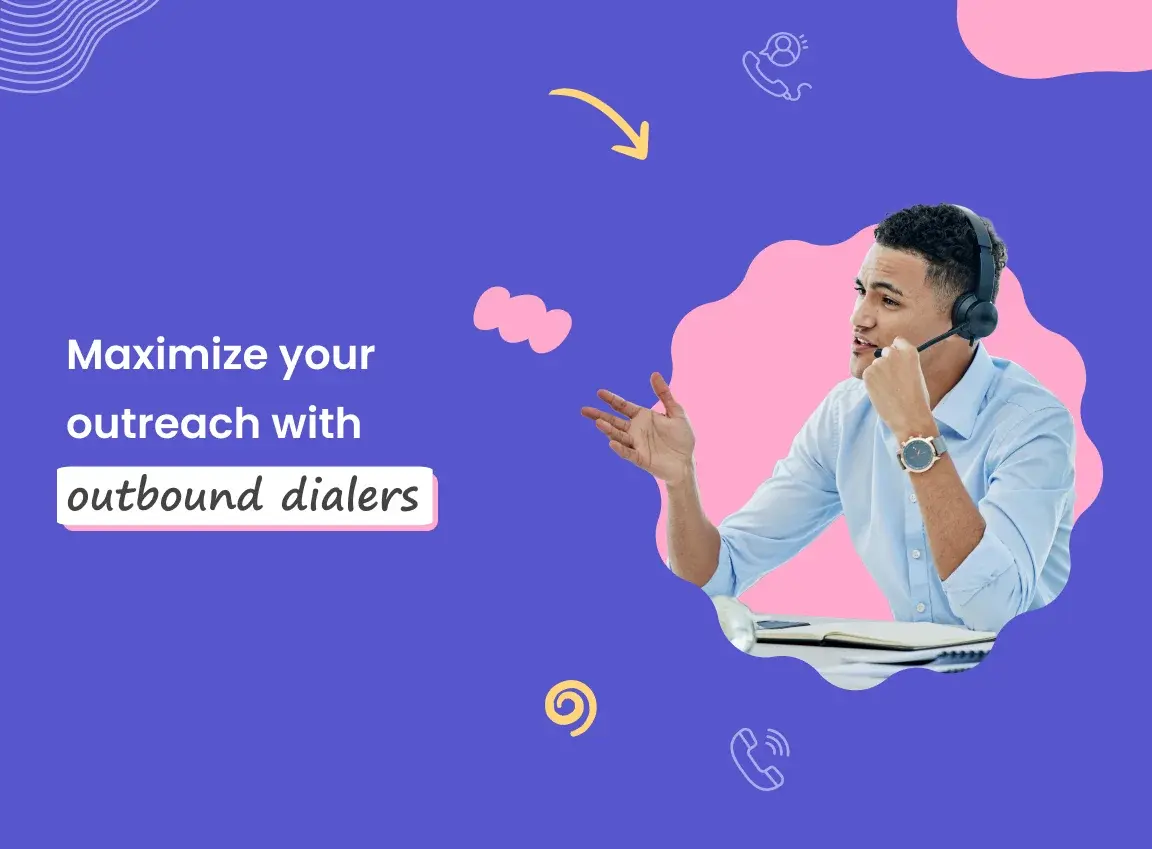In a salesperson’s utopia, there will be no objections when they are cold calling.
If sales objections don’t exist, there’s nothing that’d stop you from crushing your quotas.
But, in the real world that we’re in, objections are quite normal in the sales process. So, good objection-handling techniques become essential—not optional—for salespeople to book their meetings through cold calling.
Each prospect will have a unique point of view about their needs, according to which their objections would vary. Some might actually be interested in your solution and have a genuine objection that needs your attention. Others might be on the fence about getting a new solution and needs some convincing before they agree to get on a meeting. A few others might not be inclined to purchase a new solution and might pose an objection just to get you off the phone.
So, how can sales professionals handle all kinds of objections?
As part of Klenty’s SDR X Factor series, we spoke to 8 top-performing sales reps from different industries selling to different audiences to get insights on how they sell. Each of them gave us chock-full of strategies and tips on cold calling. They told us the common objections they face every day while cold calling, and their effective objection handling techniques.
Here, we’ve curated 11 of the objections these top SDRs face during their sales conversations, along with the rebuttals.
How to Handle the Common Cold Call Objections SDRs Face?
1) “I’m Not Interested.”
- Nanditha Menon from G2 would reply to this objection like this: “Do you think I can touch base with you sometime later? Do you think your priorities would change?” Asking for a better time would give the prospect more time to think, and they might give an alternative time and date.
- Nikita Solberg of Deel tries to disarm the prospect by saying: “I get that being sold to is super uncomfortable but I wanted to reach out because…” and provide a value statement to say why they specifically reached out to them. This could allay the prospect’s concerns, and establish a connection.
- Joel Thomas from Almabase replies with “Was I way off?” or “Is this a timing issue?” to uncover the prospect’s concerns, and practices active listening to take the conversation further.
2) “This Is Not the Right Time.”
- Ashley Dees of Metadata has a simple rebuttal for this objection: “I don't want you to be late. When can I call you back? Will tomorrow at the same time be okay?” and reschedules the call. She also ensures persistent follow-ups, as prospects tend to not attend the rescheduled calls.
- Nanditha Menon, too, has a straightforward reply: “What is the right time?” or “When do you think we can touch base on this?”
- Nikita Solberg has a cheeky rebuttal for this: “You say you don't have time and I think our solution could help you save time. Setting up a 10-15 minute meeting could potentially save you hours down the road, and I think that's why we should keep chatting.”
3) “I’m Busy Right Now.”
- Sam Holeman of Momence would have this rebuttal: “Look, I don't want to take your time. It's going to take 30 seconds.” He then proceeds to give a brief value proposition of his platform.
- Joel Thomas would ask them, “When would be a good time to call you back?” Once the prospect gives a time, he would ask, “Can I take 30 seconds to tell you why I called?” to check if it is relevant for him to call them back, and whether this is a true objection or just a brush-off.
4) “I’m Not the Right Person.”
- Alastair Chamberlin from Zinc says solid research about the prospect helps in handling this objection. Once the person says they’re not the prospect he was looking to speak to, he would name-drop some members of the prospect’s sales team or their manager, asking whether it was this particular person that he should reach. Seeing that you’ve done your research can make them more conversational.
- Ashley Dees has a fun yet successful strategy to handle this objection.
When she reaches the wrong person, she quickly searches for their name on LinkedIn while being on the line. And, she finds a snippet of information about them, like the university they went to—UCLA, for example—and would Google “fun facts” about that.
Then, they would tell them a silly fact like, “Did you know that the first mascot at UCLA was a jellyfish?” This usually gets a laugh from the person and keeps the conversation going, after which she asks them about any relevant information. - Sam Holeman asks for the contact details of the right contact in an honest and excited tone of voice. An example: “Hey, I just want to chat up. I've got this great idea. But then, how can I get hold of {prospect name}?”
- Nikita Solberg first apologizes to the wrong person. Then, they would attempt to learn more about the company from them by asking: “I want to make sure that I can provide the relevant information. Do you mind sharing a little more about maybe some of your responsibilities and where are some areas that potentially we could help with that?”
5) “We’re Already Using a Tool From [Competitor].”
- Aamir Sohail from Vervotech focuses on highlighting the strengths of his product instead of diminishing the competitor’s product. His rebuttal would comprise open-ended questions like, “That’s a great one, but do they have this that we have?” or “How important is customer service to you? Because we are very proud of our customer service.”
- Alastair Chamberlin would first tell the prospect that the tool they’re using is a good one, instead of dismissing it, which could annoy them. His first response is: “Yeah, I’m familiar with them. Really good tool for scaling businesses.”
Next, he would go on to tell how some of his existing customers switched from the tool they were using to his product, something on the lines of: “Typically, we found that our customers that have come from there have found once they switch, they've seen real value in our enhanced features.”
He would then pick a specific pain point and explain how his product would solve better than the competing tools, usually with the help of case studies. - To this, Joel Thomas would use replies that affirms what the prospect said, something like, “How is the tool working out for you?” or “Sounds like your tool is getting the job done.” Also, he uses the mirroring technique, where he repeats the prospect’s last few words in a questioning tone and awaits their response.
6) “I’m Not the Decision Maker.”
- Asatta Leggett of Smart 3rd Party would request them to point her toward the decision maker and then contact the right person. If they do not provide the contact details, she would simply remove them from the email sequence and move on to the next prospect.
- Ashley Dees would first make it clear in her response that she wants to talk to this prospect, whether or not they sign the contract. Based on her research to see if her product would be a good fit for their use case, she’d go ahead with her sales pitch.
7) “We’re Comfortable With Our Existing Platform.”
- Sam Holeman would reframe the conversation when his prospects tell him they have spent a long time learning their existing platform and now they’re comfortable with it. His rebuttal would be, “Have you ever thought about the fact that you've spent so much time investing in the software that's probably inherently broken? That's why it's taken you so much time? Have you ever thought that maybe there could be something out there where you don't need to spend time on?”
8) “I’m Not Sure if We Need This at the Moment.”
- After hearing this objection, Aamir Sohail goes on to explain the salient features of his solution, as the prospect might not be aware of what exactly the product is.
9) “How Did You Get This Number?”
- This objection shows that the prospect is clearly not happy.
So, Nikita Solberg first tries to defuse the situation by apologizing. They follow it up by asking, “Is there a better number to reach you at? Just so I can make sure to forward any relevant information.”
Next, they ask whether they can talk a little bit more about the prospect’s processes in an effort to establish a connection.
10) “I Don’t Work at This Company Anymore.”
- If the prospect she contacted no longer works at the company or has retired, Asatta Leggett asks, “Is there someone in that department you can transfer me to, that I can speak to? Or can you give that person a message for me?”
11) “Our Technology Team Is Taking Care of [Pain Point] and It Seems To Be Working Fine.”
- According to Aamir Sohail, the prospect’s objection shows that the prospect knows your product , but they're not sure about the additional value of your product that can be of use to them. So, he highlights the USP of his product versus their existing solution.
5 Tips From Top-Performing SDRs for Handling Sales Objections on Sales Calls
1) Alastair Chamberlain: It’s really important to have good knowledge of your customers and where they've come from whether they've come from a competitor or not. Because when you're objection handling, that is really powerful.
2) Aamir Sohail: My way to overcome objections is to educate them. So if I have key facts ready with me, if I can provide every single statistic or a fact based on the case, I think it will help me sell the product better.
3) Asatta Leggett: I try to just take a step back and not take things personal, because it's just business at the end of the day
4) Ashley Dees: When I'm reaching out to people, I like to have fun. I think the most satisfying part of our job is that we can do silly stuff and be creative, and I really enjoy making people laugh personally. So anytime I'm able to do that, I will
5) Nanditha Menon: When they say no, don't feel bad and cut the call. Always try to understand why exactly they say that.
Final Words
For B2B sales reps, objection handling skills can sometimes be that crucial deciding factor when it comes to booking those meetings. Building trust in the minds of your prospects begins with successfully overcoming their objections.
The objection handling processes of these 8 quota-smashing SDRs, along with their objection handling tips, will equip you to handle any types of sales objections that you might encounter.
Do check out their stories in the SDR X Factor series for more such strategies on cold calling and cold emailing.





